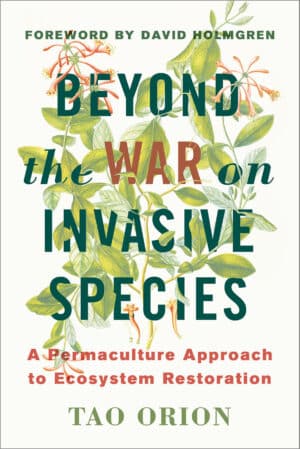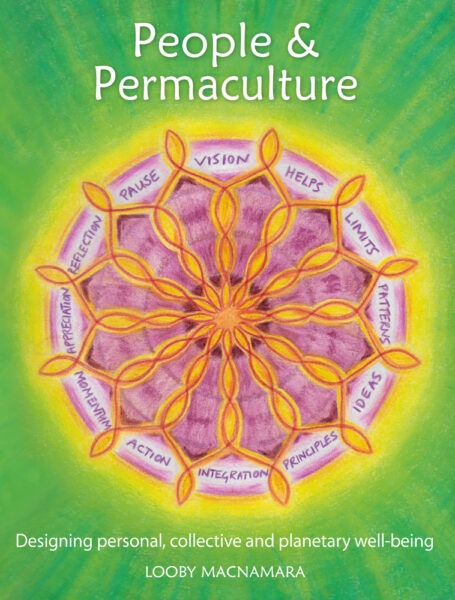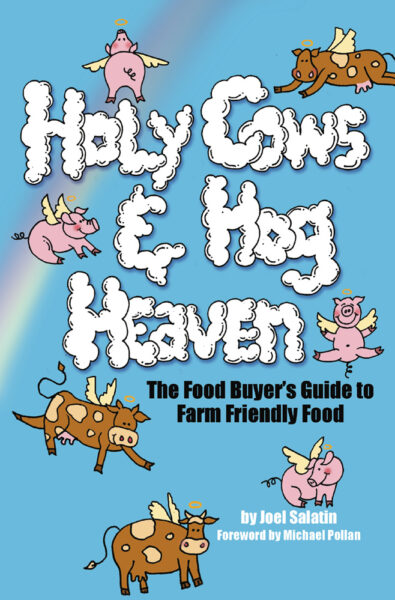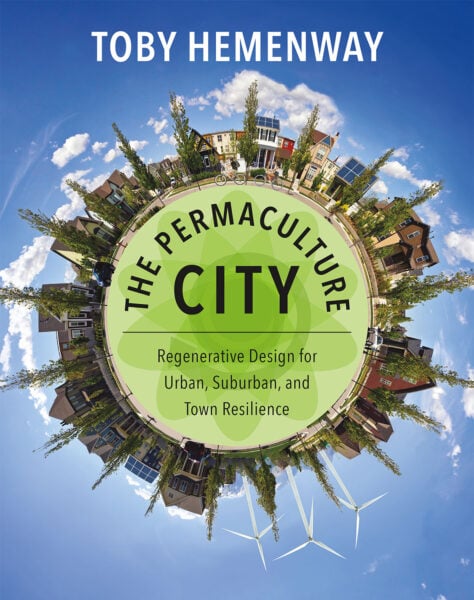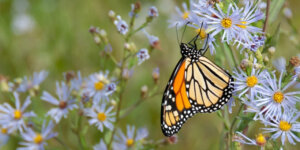Too Much St. John’s Wort? Look to the Cows
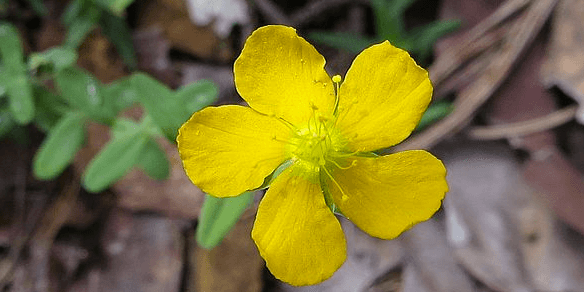
No matter what part of the country you live in, non-native plant species take root and thrive. Dubbed “invasive,” these species are often considered an annoyance at best and aggressively eradicated with harmful chemicals at worst. They are deemed enemies of the land and have become targets of an ongoing war fought with a steady arsenal of bulldozers, chainsaws, and herbicides.
But what if they were not viewed in such a negative light? What if they could be examined, understood, and harnessed for beneficial uses instead?
Tao Orion, author of Beyond the War on Invasive Species, and Katrina Blair, author of The Wild Wisdom of Weeds, each offer up a different perspective on how to approach many species of plant life deemed a threat.
Drawing on their unique and extensive experiences working with wildlife, Orion and Blair will share how to manage and use each species based on holistic, permaculture-inspired ideas. Take a look through their approaches to St. John’s Wort and stay tuned for more alternative perspectives on managing invasive species.
How Cattle Grazing Practices Affect the Proliferation of St. John’s Wort
By Tao Orion
St. John’s Wort (Hypericum perforatum) is a perennial herbaceous plant that grows throughout the intermountain western US. It is considered an invasive species because it fills niches where other plants that provide more valuable forage for cattle once grew. St. John’s Wort is one of those invasive species that has been named such because of how it affects human interests – in this case because it supposedly displaces plants that cattle could eat. However, although St. John’s Wort is the bane of cattle owners in the intermountain west, the ecological reason that it is proliferating has everything to do with grazing practices.
If left to their own devices, cattle are picky eaters – when unmanaged they will wander through a landscape eating only what appeals to them. If this continues over the course of years, decades, or even centuries – as it has in many parts of the intermountain west – eventually the landscape will be full of species that they prefer not to eat, like St. John’s Wort, because they have eaten down everything else. Cattle can eat some St. John’s Wort, but large amounts can cause photosensitivity and “hypericism,” a condition that could cause dehydration and death in the worst case, although weight loss (and thus lower market value) are more common. But, if cattle are eating too much St. John’s Wort, it is because the area where they are grazing no longer supports more desirable forage, which in turn is a result of long-term unmanaged open range grazing. So trying to get rid of St. John’s Wort in order to improve forage value without addressing the need to change grazing practices is an exercise in futility.
The necessary end of open range grazing
Like many invasive species, St. John’s Wort is a pioneer plant, meaning it thrives in recently disturbed ecosystems. It’s spreading rhizomatous roots stabilize bare, erosion-prone soils. St. John’s Wort is an important nectar source for native pollinators including bumblebees and sweat bees. Though St. John’s Wort is adding significant ecological value to the ecosystems where it is found, many cattle owners desire less St. John’s Wort and more perennial grasses, forbs, and legumes for cattle forage. So the management of St. John’s Wort should come in the context of implementing grazing methods that stimulate desirable forage species, meaning open range grazing – which is ‘business as usual’ throughout most of the intermountain west – must come to an end.
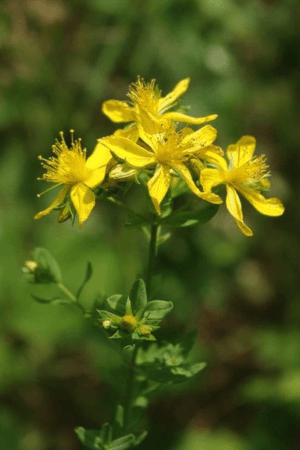 If cattle or other ruminants are managed in larger numbers for short times on rotationally grazed paddocks, they are less likely to be so selective – they’ll eat a bit of everything. Then, they are moved to the next paddock, where they do the same, and are not allowed back to the first paddock until it has regenerated. Rather than consistently targeting fewer and fewer less palatable species, the practice of management intensive rotational grazing allows for regeneration. The short duration of concentrated trampling and manuring stimulates further growth, and mimics the bunching and dispersal patterns of large ruminant herds that were critical features of maintaining the biodiversity of the world’s prairies and savannahs.
If cattle or other ruminants are managed in larger numbers for short times on rotationally grazed paddocks, they are less likely to be so selective – they’ll eat a bit of everything. Then, they are moved to the next paddock, where they do the same, and are not allowed back to the first paddock until it has regenerated. Rather than consistently targeting fewer and fewer less palatable species, the practice of management intensive rotational grazing allows for regeneration. The short duration of concentrated trampling and manuring stimulates further growth, and mimics the bunching and dispersal patterns of large ruminant herds that were critical features of maintaining the biodiversity of the world’s prairies and savannahs.
Graziers who practice management intensive rotational grazing and holistic management report significant declines in unpalatable species like St. John’s Wort and increases in fertility, water holding capacity, and grass and forb diversity. Thus the best practice for management of St. John’s Wort perfectly encapsulates the Permaculture philosophy of seeing the solution inherent in the observed problem.
Medicinal Uses of St. John’s Wort
St. John’s Wort is a wild plant that offers a full spectrum of benefits to our human population and surrounding ecosystem. As a present-day herbal medicine, St. John’s Wort appears useful in relieving depression. Yet the irony is that it is also labeled as a noxious weed and is being sprayed with Roundup around the country. Exposure to these toxic herbicides can create a depressed immune system, which can lead to psychological depression and other chronic illnesses.
Recently, I was given a children’s game called ‘Wildcraft.’ I played it with my great friend Tobias and together we learned about the medicinal uses of many local plants including St. John’s Wort. This species helps heal the following:
-
Sunburns
-
Fire burns
-
Nosebleeds
-
Bruising
-
Insomnia
-
Coughing
-
Sore muscles
-
Tiredness
-
Anxiety
St. John’s Wort is obviously a valuable medical first aid kit. At present, there is a big disconnection requiring immediate remediation on a national level. The problem is that we are poisoning an important plant and polluting the environment in the process. Simply stated, the solution is encouraging the practice of turning a “problem” into a resource. Whether we choose to harvest the plants for human benefit, or allow them to just exist and allow nature’s intelligence to sculpt the earth as it does, we can do better for our children and all beings on earth.
Recent Articles
Garden strawberries are excellent for both covering the ground and for growing fruit. If you’re planning out a forest garden, or are just looking for a plant to use as ground cover, strawberries are a great option. The following is an excerpt from The Home-Scale Forest Garden by Dani Baker. It has been adapted for…
Read MoreFor too long, bugs have had a negative connotation associated with them. But what if we took the time to observe the benefits of insects? It’s time to rebug our gardens, lawns, and parks! The following is an excerpt from Rebugging the Planet by Vicki Hird. It has been adapted for the web. Adding Bugs:…
Read MoreAsparagus is a delicious vegetable with a layered history. How did this aspiring spear make its way from growing in the wild to appearing on our plates? The following is an excerpt from the The Seed Detective by Adam Alexander. It has been adapted for the web. “Nature gives us the key to every secret…
Read MoreInterested in growing trees? Here are some tips on successfully planting, transplanting, and pruning trees to create a flourishing forest garden! The following is an excerpt from The Home-Scale Forest Garden by Dani Baker. It has been adapted for the web. Planting Potted Trees and Shrubs If you order potted trees, check with your supplier to…
Read MoreChances are, you’ve seen cattails growing on the edge of your local lake or stream at least once or twice. Instead of just passing these plants, try foraging for and cooking them to create delicious seasonal dishes! The following excerpt is from The New Wildcrafted Cuisine by Pascal Baudar. It has been adapted for the…
Read More

